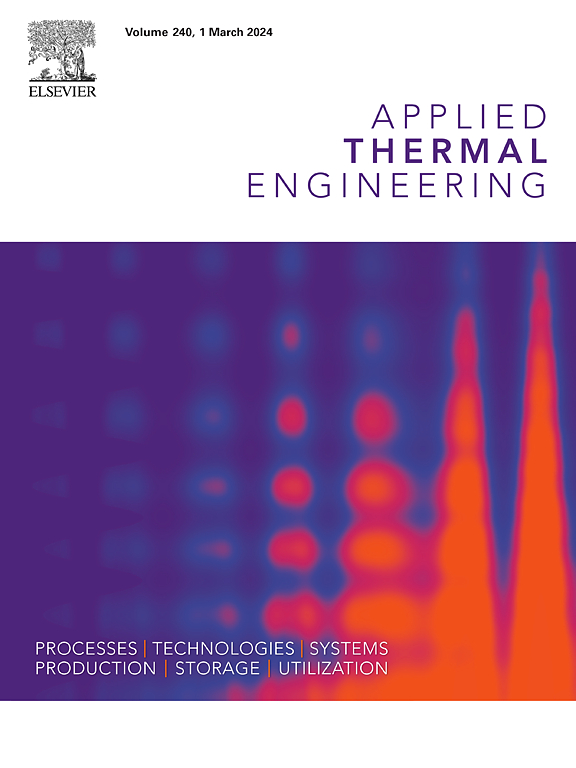全局玻璃脉动热管中温度振荡信号的小波分析
IF 6.1
2区 工程技术
Q2 ENERGY & FUELS
引用次数: 0
摘要
为了有效控制脉动热管中复杂的汽液两相振荡流,必须研究其热流体力学行为并了解其背后的传热机制。然而,如何直接观测脉动热管中的两相流动模式一直是个难题。为了克服这一障碍,我们构建了一个全局玻璃脉动热管,以直观地观察流动模式,同时通过连续小波变换监测和分析温度振荡信号。利用这种方法,这项研究将流动模式与测量到的温度信号联系起来,并分析了它们随输入热通量的变化。结果表明,玻璃材料的热惯性不容忽视,这会导致壁温信号失真。就流体温度而言,随着内壁表面热通量的增加(0.35 W/cm2 至 3.18 W/cm2),其波动幅度减小而频率增加,同时其主频从 0.02 Hz 增加到 3.88 Hz。在这一过程中,我们观察到管道内的流动模式逐渐从蛞蝓流转变为环形流,并最终转变为热通量较高时的总循环。基于这些结果,我们建立了流体温度主导频率与流动模式之间的关系,该关系可推广到其他金属脉动热管,并有助于未来脉动热管的设计。本文章由计算机程序翻译,如有差异,请以英文原文为准。
Wavelet analysis of temperature oscillation signals in a global glass pulsating heat pipe
To effectively control the complex vapor–liquid two-phase oscillatory flow in a pulsating heat pipe, it is essential to investigate its thermo-hydrodynamic behaviors and understand the underlying heat transfer mechanisms. However, the direct observation of the two-phase flow pattern within the pulsating heat pipe has been a long-standing challenge. To overcome this obstacle, a global glass pulsating heat pipe was constructed to visually observe the flow pattern, while the temperature oscillation signals were monitored and analyzed by continuous wavelet transform. Using such a method, this work connected flow patterns with measured temperature signals, and analyzed their variations with input heat fluxes. Results showed that the thermal inertia of glass material is not negligible, which leads to signal distortion of wall temperature. For the fluid temperature, its fluctuation amplitude decreases while frequency increases as the heat flux of inner wall surface rises (0.35 W/cm2 to 3.18 W/cm2), meanwhile, its dominant frequency increases from 0.02 Hz to 3.88 Hz. During this process, it was observed that the flow patterns within the pipe gradually changed from the slug flow to the annular flow, and eventually to the general circulation at higher heat flux. Based on these results, we established a relationship between dominant frequencies of fluid temperatures and flow patterns, which can be extended to other metal pulsating heat pipes and assist the future design of pulsating heat pipes.
求助全文
通过发布文献求助,成功后即可免费获取论文全文。
去求助
来源期刊

Applied Thermal Engineering
工程技术-工程:机械
CiteScore
11.30
自引率
15.60%
发文量
1474
审稿时长
57 days
期刊介绍:
Applied Thermal Engineering disseminates novel research related to the design, development and demonstration of components, devices, equipment, technologies and systems involving thermal processes for the production, storage, utilization and conservation of energy, with a focus on engineering application.
The journal publishes high-quality and high-impact Original Research Articles, Review Articles, Short Communications and Letters to the Editor on cutting-edge innovations in research, and recent advances or issues of interest to the thermal engineering community.
 求助内容:
求助内容: 应助结果提醒方式:
应助结果提醒方式:


